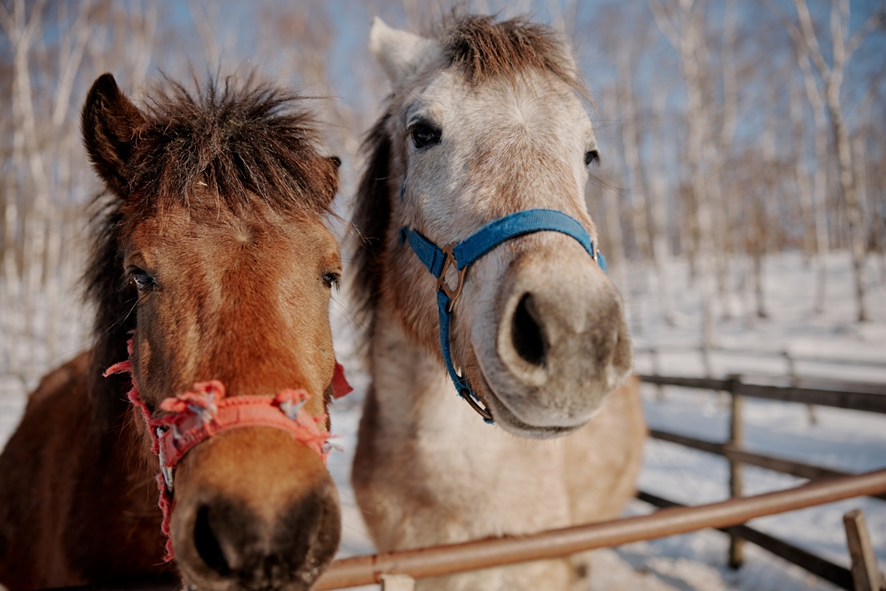
” My vision is to be among a thousand galloping horses, with children astride them,” said Hata Masanori, the legendary zoologist and writer known as Mutsugoro, whose kindness and wisdom shone in his eyes. Having Lake Mashu on the west and Shari Dake mountain on north, Nakashibetsu is in a vast plain of eastern Hokkaido. In a town with great nature where the main industry is dairy farming, Mutsu Pasture pursues its mission. The pasture started as a branch of Mutsugoro Animal Kingdom which was also located in Hokkaido as a project organized by Mutsugoro from the 1970s. Currently in the pasture, there are 18 horses living freely, and visitors can enjoy riding them. Before explaining what they are doing, we shall learn about the life of Mutsugoro.
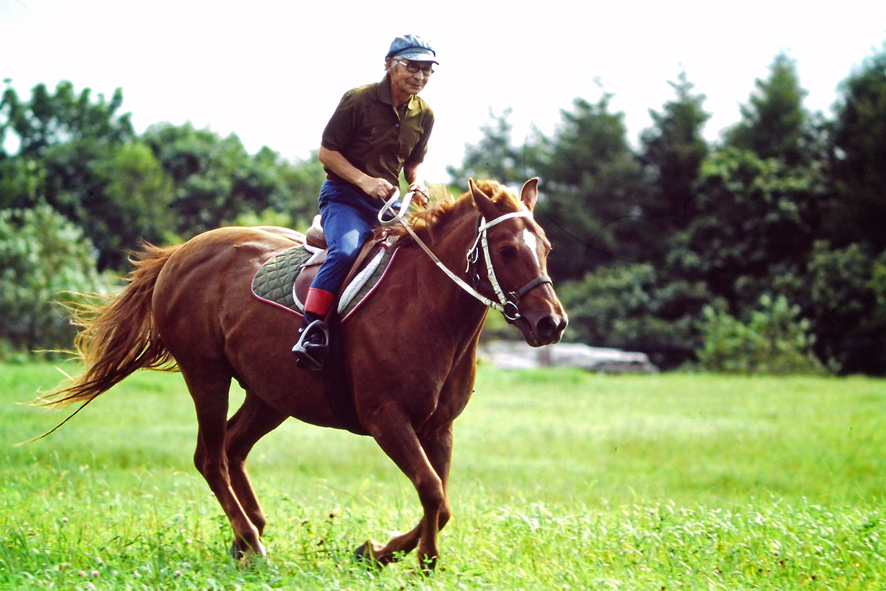
Who is Mutsugoro
Hata Masanori was born in 1935 in Fukuoka. After studying zoology in the Faculty of Science at the University of Tokyo, he started to work in a company which produces educational films of science. From the 1960s, he began to publish essays and novels about animals with his nickname, Mutsugoro (means mudskipper in Japanese), on. The opportunity that he got famous throughout Japan is when he started to appear in a TV program which showed his life with animals in Hokkaido and around the world. His open minded character and boldness toward any animals dragged the attention of viewers. Ever since that, Mutsugoro became an icon of the animal lover in Japan, and kept his popularity. Although Mutsugoro Animal Kingdom changed the form into Mutsu Pasture specialized in horses in its long history, the spirit is continued to present. Animals and humans are friends.

Mutsugoro’s visions
We got a chance to meet Mutsugoro after having a horse ride in deep snow. Becoming 86 years old, his love for animals has not changed. While a dog was walking around Mutsugoro as if protecting his owner, he kindly answered our questions. When we asked him what is the thing he wants to succeed to the next generations in Hokkaido, after a little silence, he began to speak. “Did you ride on the horses?” he continued, “They can communicate with people without any words. It took 50 years to bring them like this”. He explained to us how it is amusing to ride a horse in deep snow, or in a formation with such an episode. Once he was in the Mongolian plain, he experienced a formation with 1200 horses. He always started from the very behind to challenge how many horses he could pass. His eyes telling the story were as pure as a boy’s. “I want to let children have the experience of making a formation with 30 or 50 horses”. “Horses” and “Children”, those might be the keywords of his vision.
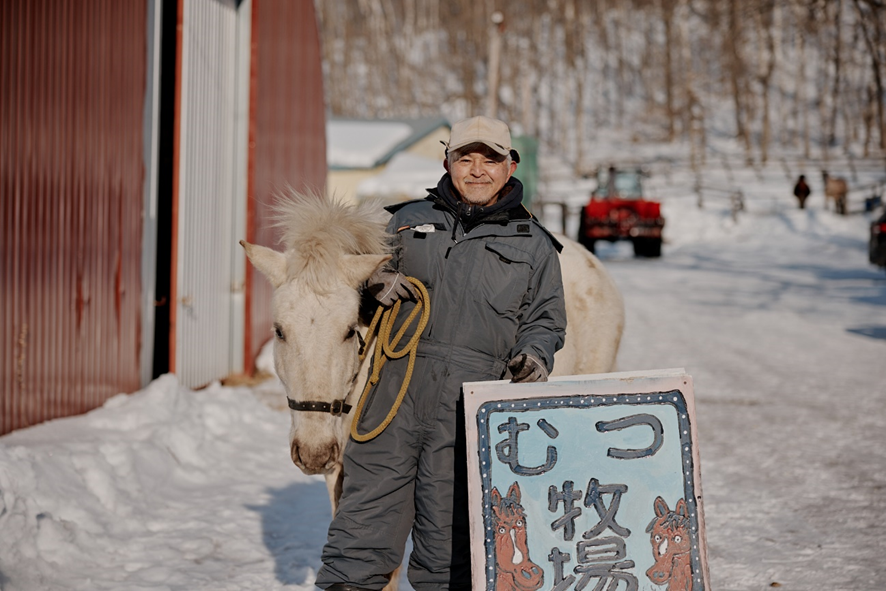
Workers in Mutsu Pasture
Mr. Tsuyama is one of two men who works in Mutsu Pasture. When he was a child, he was fascinated with the essays written by Mutsugoro. After a while, it brought him to Hokkaido all the way from Okinawa to see Mutsugoro once. Back then, there were many young men who wanted to work with Mutsugoro which was a trouble for Mutsugoro because he could not hire everyone. Tsuyama was not expecting to work with him either, but consequently thanks to his personality, Tsuyama has been working with Mutsugoro for 38 years. “I think I haven’t even attained 1% of what Mutsu-san wanted to do, but recently, he started to praise us,” said Tsuyama. His inherited philosophy of Mutsugoro is indeed utilized to train horses. “What I learned from Mutsu-san, that is something indescribable.” All his words implied the will to continue the Pasture.
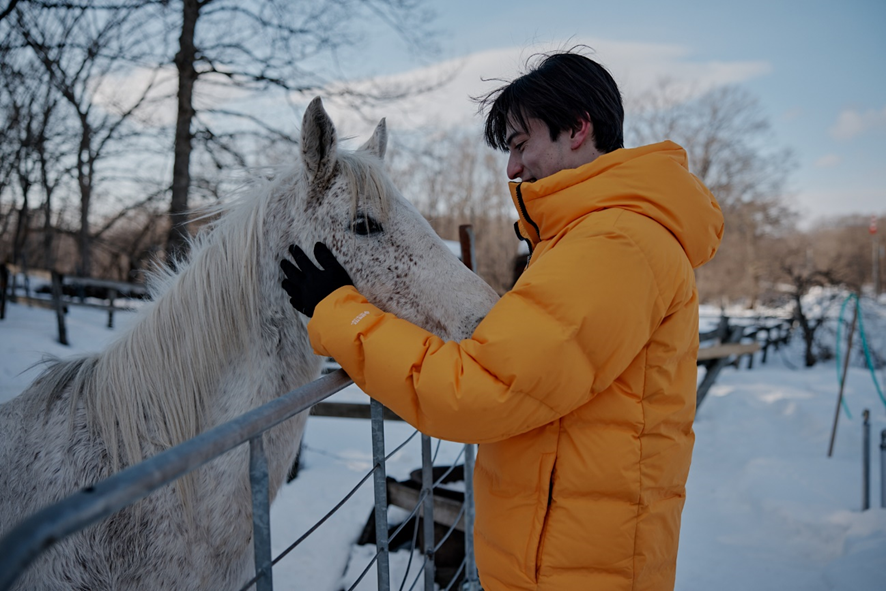
Mutsu Pasture
At the peak, there were 120 horses in Mutsu Pasture, but now there are 18. Their current target is to increase horses up to 30 or 40, and enable a classroom full of children to enjoy horse riding together. This project is what they used to hold, and they were amazed how quickly children acquire it. When they took care of children for a week, most of them were able to run with a horse at the end. This is of course due to the absorbability of children, but also the character of the horses in Mutsu Pasture.
There is no barn or place to tie horses in the pasture so that they grow very open minded. A visitor participates in the horse riding activity in Mutsu Pasture, one experiences bringing a horse out from the pasture, brushing the body, putting a saddle, riding the horse, feeding them, taking off the saddle, and putting them back to the pasture. Each step builds a relationship with a horse. This is something you cannot experience in other pastures.
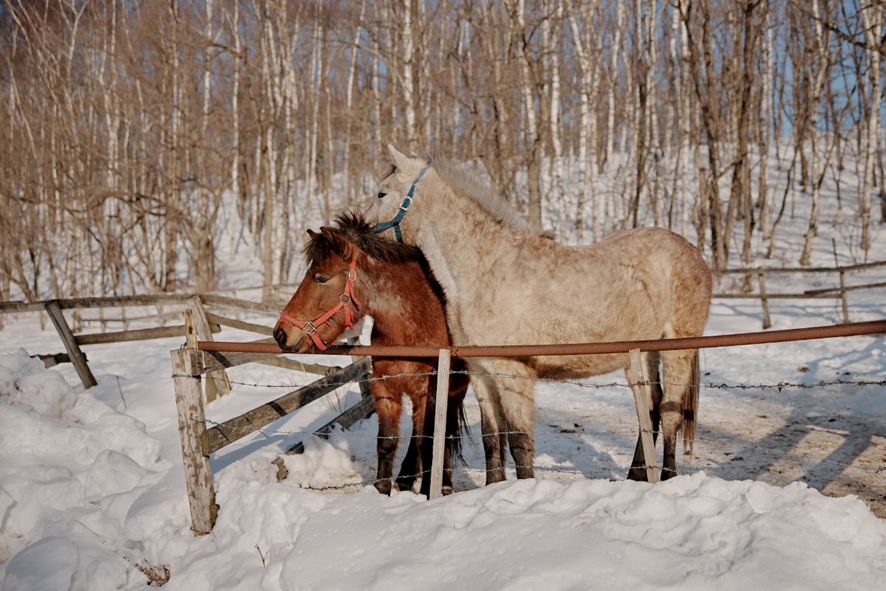
Mutsugoro’s YouTube
During COVID-19 stuned to world, Mutsugoro and his colleagues started to post videos to their YouTube channel called “Mutsugoro 656”. One thing that Mutsugoro wants to do in life is to talk about one million species of animals living on earth. Posting a million videos would be tough so they set a goal to post 656 (could be read as Mutsugoro in Japanese). In the videos, he talks about the features of each animal, introductions to zoology, and the experiences he had in the world. Fortunately, there are English subtitles on so that the readers of this article can visit the channel and discover his world!
“Mutsugoro 656”.
Conclusion
Now you might have understood the story of Mutsugoro. As a zoologist and a writer, he explored the world and tackled the mystery of animals. His love and philosophy of animals is now being succeeded to the next generation, and it flourished as beautiful horses. Come to Nakashibetsu to see what Mutsu Pasture is exactly like, and to realize the wisdom of Mutsugoro. This is where the distance of a horse and a human is closest in the world.